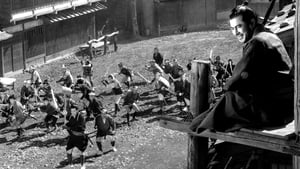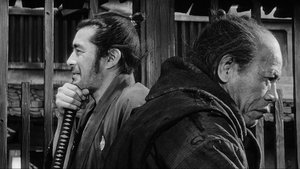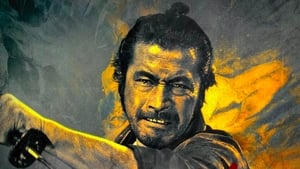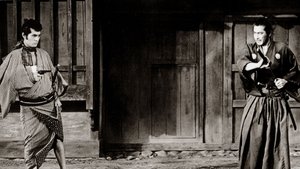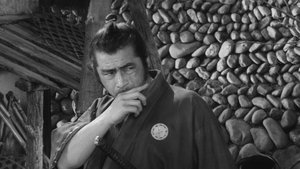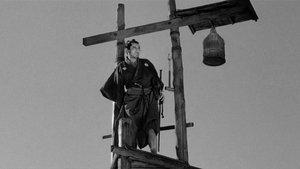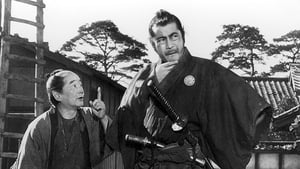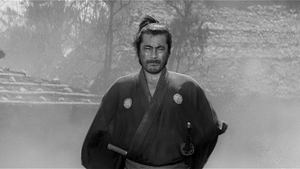Video Sources 0 Views
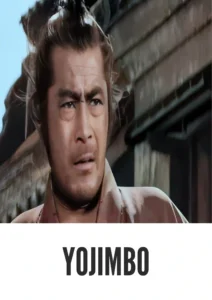
Synopsis

Step into the chaotic world of feudal Japan with Akira Kurosawa’s Yojimbo, a timeless samurai action film from 1961, now beautifully colorized to offer a fresh and immersive viewing experience. Starring the legendary Toshiro Mifune, this cinematic masterpiece blends elements of action, suspense, and dark humor, all set against the backdrop of warring factions and moral ambiguity. Perfect for fans of classic cinema, samurai films, and those seeking a unique visual experience, this HD download brings Kurosawa’s vision to life in stunning detail. Yojimbo, also known as The Bodyguard, stands as one of Kurosawa’s most influential works, inspiring countless filmmakers and captivating audiences worldwide.
Yojimbo unfolds in 19th century Japan, where a wandering ronin, Sanjuro Kuwabatake (Toshiro Mifune), arrives in a desolate town rife with corruption and violence1. The town is torn between two rival gangs, led by Seibei (Seizaburô Kawazu) and Ushitora, who are battling for control of the lucrative gambling trade13. Seeing an opportunity to exploit the situation, Sanjuro, the Yojimbo (bodyguard), decides to play both sides against each other, offering his services as a hired sword to the highest bidder13.
As Sanjuro skillfully manipulates the two factions, the conflict escalates, leading to betrayals, alliances, and intense confrontations23. The arrival of Ushitora’s cunning brother, Unosuke (Tatsuya Nakadai), who wields a pistol, adds a dangerous new element to the equation1. Sanjuro finds himself navigating a treacherous landscape of deceit and violence, where his wit, cunning, and unmatched swordsmanship are his only weapons12.
Amidst the chaos, Sanjuro’s actions are driven by a desire to rid the town of its corrupt elements, even if it means resorting to morally ambiguous tactics23. His presence serves as a catalyst for change, exposing the true nature of the town’s inhabitants and forcing them to confront their own greed and depravity12. In a climactic showdown, Sanjuro confronts the warring gangs, unleashing his fury and restoring a semblance of peace to the town1.
The film features a stellar cast of actors who bring Kurosawa’s vision to life:
-
Toshiro Mifune as Sanjuro Kuwabatake
-
Tatsuya Nakadai as Unosuke
-
Yoko Tsukasa as Nui
-
Isuzu Yamada as Orin
-
Seizaburô Kawazu as Seibei
-
Takashi Shimura as Tokuemon
-
Eijirō Tōno as Gonji
Yojimbo masterfully blends elements of samurai action, jidai-geki (period drama), and noir5. Its gripping storyline, combined with Kurosawa’s innovative filmmaking techniques, creates a unique and unforgettable cinematic experience23.
Released in 1961, Yojimbo marked a significant departure from traditional samurai films, introducing a more realistic and violent portrayal of feudal Japan8. Akira Kurosawa sought to challenge the conventions of the genre, exposing the artificiality of earlier works and highlighting the gruesome reality of violence8.
Yojimbo draws inspiration from classic Japanese literature and Western cinema, particularly the works of Dashiell Hammett and John Ford28. The film’s success paved the way for a new wave of Japanese cinema, influencing countless filmmakers and reshaping the cinematic landscape for generations to come2. Its impact extends beyond Japan, with Sergio Leone’s A Fistful of Dollars (1964) serving as an unofficial remake, further cementing Yojimbo‘s legacy as a groundbreaking work of cinema37.
This colorized version of Yojimbo offers a fresh perspective on Kurosawa’s masterpiece, meticulously recreating the film’s iconic imagery in vibrant hues2. The colorization process involved carefully analyzing the original black and white footage and assigning appropriate colors to each scene, enhancing the visual impact and bringing new depth to the story2. While some may debate the merits of colorizing classic films, the colorized version of Yojimbo introduces the film to a broader audience, ensuring its legacy for future generations2. The early colored version enhances the film’s visual palette while staying true to its timeless spirit2.
-
: Akira Kurosawa
-
: Akira Kurosawa, Ryuzo Kikushima
-
: Masaru Satô
-
: Kazuo Miyagawa
-
: Kurosawa Productions
-
: Toho
-
: 110 minutes
-
: MP4
-
: HD (1080p)
-
: Compatible with most devices, including smartphones, tablets, computers, and smart TVs.
Yojimbo has garnered widespread acclaim for its innovative storytelling, stunning visuals, and memorable characters23. The film’s impact on cinema is undeniable, with its influence felt in numerous subsequent works23. Whether experienced in its classic black and white form or its colorized iteration, Yojimbo remains a testament to the power of storytelling and the enduring legacy of Akira Kurosawa2. The film won the Volpi Cup7.
-
: What is Yojimbo about?
-
A: Yojimbo tells the story of a wandering ronin who arrives in a town torn between two warring gangs and decides to play them against each other.
-
-
: Is Yojimbo (1961) a well-known Kurosawa film?
-
A: Yes, Yojimbo is one of Akira Kurosawa’s most celebrated and influential works, widely regarded as a classic of samurai cinema.
-
-
: Is this version of Yojimbo colorized?
-
A: Yes, this version has been professionally colorized to offer a fresh and immersive viewing experience.
-
-
: What makes Yojimbo interesting for Kurosawa fans?
-
A: Yojimbo showcases Kurosawa’s innovative filmmaking techniques, his exploration of moral ambiguity, and his ability to blend action, suspense, and dark humor.
-
-
: What is the download format?
-
A: The download format is MP4, which is compatible with most devices.
-
-
: What resolution is the download?
-
A: The resolution is HD (1080p), providing a high-quality viewing experience.
-
Watch Yojimbo Today!
